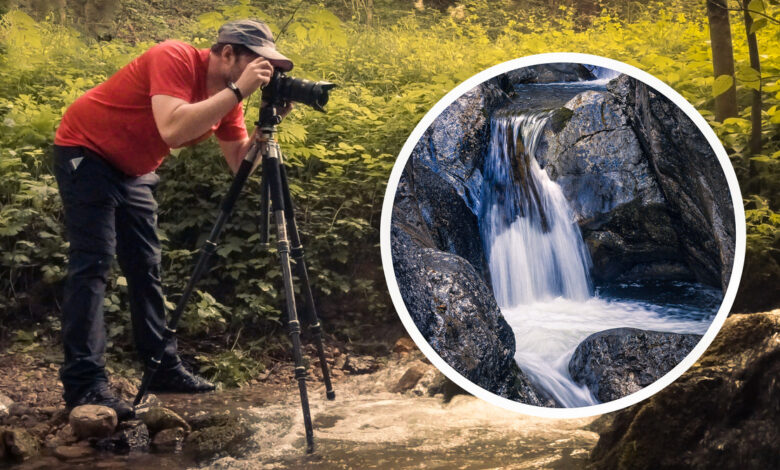Take razor-sharp photos with any lens

Here’s the surprise: you can get incredibly sharp photos with cheap equipment. Let’s look at what sharpness is and how we can improve it.
What is sharpness?
We all want sharp photos. But what exactly is sharpness? Forget all composition and lighting methods for a moment. Take a look at the image below, it’s just a snapshot of a fly. The image on the left is sharp, the image on the right is blurry. But what is the difference? Moving the slider to the right will show you the original size of the image. Moving it to the left instead will show you what happens when we zoom in very close using Photoshop. What’s interesting are the fly’s edges, wings and feet, in this case. While the pixels in the sharp version have more contrast with each other, the pixels in the blurred version appear to have inherited information from their neighbors, resulting in an unfocused appearance.
So when we subdivide it, sharpness is not just the contrast between pixels. Let’s see what methods we can use to get sharper photos.
A good tripod is more important than a camera
A sentence that everyone has known for years, and it still holds true. As our camera moves while we expose, the image will be blurred. I’m not talking about long exposure for many seconds, as everyone is careful with long exposure shots. In my experience, most problems with shaky images occur at shutter speeds between 1/50 and 1/2 second. Here a good tripod is very useful and using a remote control or a timer of at least two seconds will avoid vibrations caused by touching our equipment.

Motion blur
Just as it is important for our camera to be solid, it is also important that the elements of our composition do not move, unless we want to use this to support the story that the image Ours should tell. Therefore, we need to choose a sufficiently short shutter speed, which depends on the speed at which the element is moving. The faster an element moves, the shorter the shutter speed must be adjusted to avoid motion blur.
When we’re working in a studio or a situation with enough light and the elements are slow or motionless, this won’t be a problem, but if we want to capture a woodland scene, for example, without an artificial light source , with foliage moving in the wind, we would have to increase the ISO to get a shutter speed short enough, or we open the aperture to let in more light into our sensor.
Aperture: Friend or Enemy?
Opening the aperture a bit more is a good trick to get rid of unwanted motion blur, as we get more light on the sensor. But there are two more things we should consider about aperture to get sharp photos. First of all, lenses are not equally sharp at each aperture. So if we open the aperture too much, the image can become softer. What’s happening here is that the optical elements inside your lens are simply mixing information between neighboring pixels. So we lose sharpness. Of course, this can be desirable, especially when you want a soft bokeh effect, to separate the subject from the background.
On the other hand, when we close the aperture too much, we get diffraction, making the whole image look softer. Aperture is a very important stylistic tool. It allows us to determine the depth of field, or in other words: how sharp your composition is.

Sharp light
Sharp light? Of course, there is no such thing as sharp light. But let’s remember what sharpness is: it is the contrast between pixels. And how can we increase the contrast? Light is our friend here. Especially when the light is coming from the side, it will make all the tiny elements visible, all the structures and textures in our scene. Images start to look sharper, just by using nice secondary lighting.
Focus
I’m sure it won’t surprise you when I tell you that you get blurry images when they’re out of focus. But when you’ve read this article carefully, I’m sure you also know why. Focus simply doesn’t mean the focus is too far in front or too far behind the sensor. Pixels get information from their neighbors. This is why it’s really, really important that you always try to stay focused.
More tips and more details on how to get razor sharp images are revealed in the video linked above.






